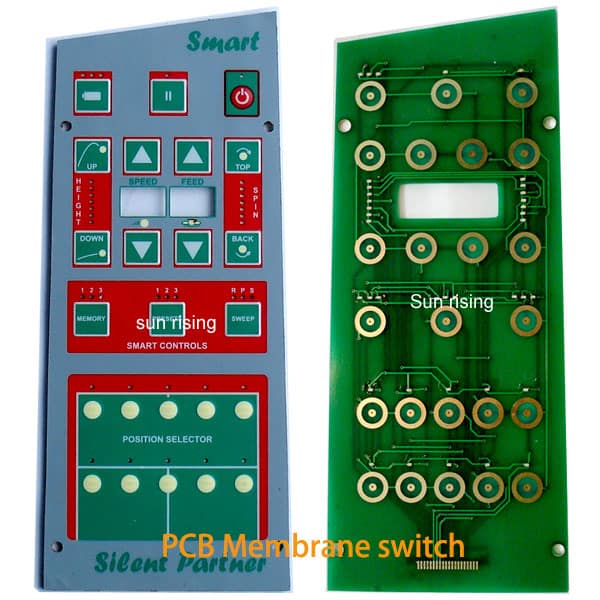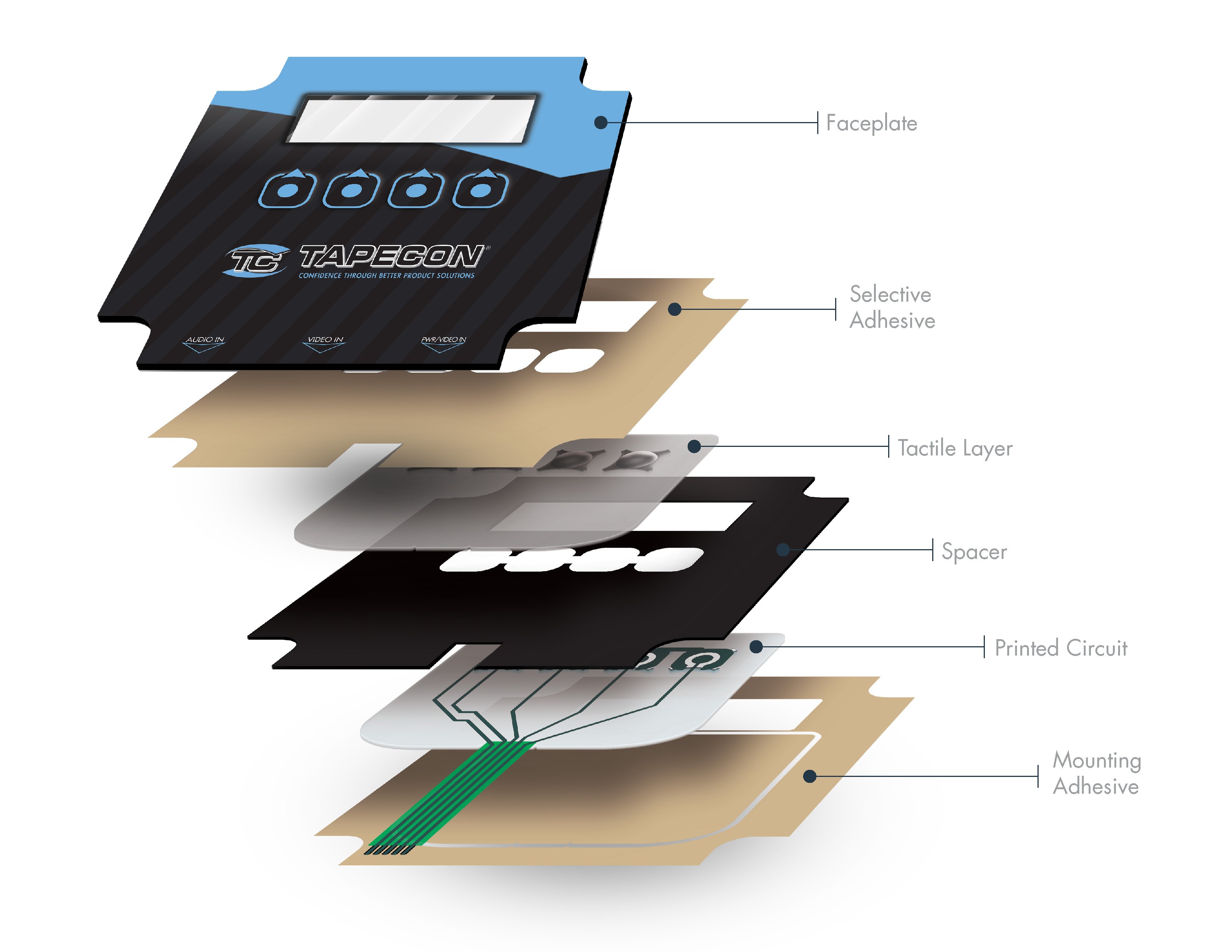How Membrane Switches Ensure Reliable and Efficiency in Electronics
How Membrane Switches Ensure Reliable and Efficiency in Electronics
Blog Article
Membrane Layer Change Innovation: The Key to Dependable and Cost-Effective User Interfaces
Membrane layer button technology has emerged as a critical part in the style of customer interfaces, supplying both dependability and cost-effectiveness across a diverse range of applications. As we explore the complex benefits of membrane layer buttons, their capacity for advancement increases concerns regarding future applications and developing patterns.
Understanding Membrane Switch Over Modern Technology
Membrane layer switch technology is a widely utilized interface service in different electronic devices, providing a seamless blend of functionality and layout. This innovation integrates multiple layers of products, normally including a visuals overlay, spacer layer, and a circuit layer. The visuals overlay shows the interface components, while the spacer layer separates the circuit layer from the overlay till a customer turns on a switch.
When pressure is related to the overlay, the circuit layer finishes the electric circuit, sending out a signal to the device. This device permits for different configurations, consisting of tactile responses and backlighting choices, enhancing user interaction. Membrane layer buttons are usually produced utilizing resilient materials such as polyester or polycarbonate, making sure longevity and resistance to environmental aspects like dampness and dust.
The convenience of membrane switches enables their application in diverse industries, consisting of medical gadgets, customer electronic devices, and industrial controls. Their small design enables integration right into space-constrained environments, giving an efficient interface without compromising aesthetic allure. Understanding the details of membrane switch modern technology is vital for suppliers and developers seeking to produce reliable and efficient human-machine user interfaces.
Key Benefits of Membrane Layer Buttons
While various user interface remedies exist, membrane switches offer distinctive benefits that make them a preferred option in countless applications. One of the main benefits is their durability; membrane layer switches are created to endure severe ecological conditions, including dampness, dust, and temperature fluctuations, ensuring resilient performance. This durability substantially lowers the demand for regular substitutes, therefore decreasing overall maintenance costs.

Additionally, membrane switches are light-weight and compact, making them suitable for applications where room is limited. Their low-profile design adds to a streamlined look without jeopardizing functionality.
Cost-effectiveness is also a notable benefit, as the production process for membrane switches often tends to be less costly contrasted to standard mechanical switches. This affordability, incorporated with their dependability and ease of installment, settings membrane switches as a sensible option for a wide variety of markets seeking reliable and efficient user interfaces.
Applications Throughout Various Industries
Just how do membrane buttons adapt to the varied requirements of numerous markets? Membrane switch modern technology is progressively identified for its flexibility, making it ideal for a large range of applications throughout several fields. In the medical area, membrane buttons are used in diagnostic devices and client monitoring gadgets, where their sturdiness and ease of cleaning are essential for preserving health standards. The vehicle industry utilizes these buttons in dashboards and control panels, using a streamlined visual while making certain easy to use operation.
In customer electronic devices, membrane layer switches offer a portable remedy for remote controls and home appliances, enhancing individual experience through intuitive design. Additionally, the commercial field leverages membrane switches for machinery control board, gaining from their resistance to harsh atmospheres, such as wetness and dirt.
Armed forces and aerospace applications additionally utilize membrane switches for their reliability and capability to stand up to severe conditions, making certain functional efficiency in crucial circumstances. Moreover, the food and beverage market adopts these switches for automated systems, where hygiene and ease of procedure are critical. Eventually, membrane buttons are customized to meet the special needs of each industry, confirming their vital duty in modern technology user interfaces
Design and Modification Choices

In the realm of membrane switch modern technology, design and customization alternatives play a crucial function in boosting Our site performance and individual interaction. These buttons can be customized to meet specific functional needs and visual preferences, making them versatile parts in different applications.
Among the key modification alternatives is the format of the button itself, which can be made to accommodate unique individual interfaces and ergonomic considerations. By readjusting the form, dimension, and arrangement of buttons, manufacturers can develop instinctive designs that promote simplicity of usage. Furthermore, the unification of different shades and graphic overlays enables branding important source and boosted presence, guaranteeing that users can promptly determine features.
Furthermore, membrane switches can be engineered with various tactile comments systems, such as raised switches or distinct clicks, to improve the customer experience. Various products can also be chosen for durability and environmental resistance, attending to variables such as moisture, temperature changes, and chemical direct exposure.
Inevitably, the extensive design and modification alternatives readily available in membrane layer switch innovation empower companies to create tailored options that not just fulfill practical requirements but also align with their branding and functional needs.

Future Patterns in Membrane Layer Buttons
As membrane switch modern technology remains to evolve, future trends are significantly concentrated on boosting user experience and integrating sophisticated functionalities. One considerable fad is the combination of touch-sensitive and capacitive modern technologies into conventional membrane layer switches. This development permits for even more user-friendly customer interfaces, offering tactile feedback while keeping a streamlined design.
Another emerging pattern is making use of eco-friendly products, driven by the expanding need for lasting production practices. Makers are looking for to reduce their carbon impact by making use of recyclable substrates and low-impact inks, aligning with international sustainability goals.
Additionally, the surge of the Net of Points (IoT) is triggering the unification of smart attributes right into membrane layer switches. Enhanced connectivity choices will certainly enable tools to connect with each various other, enabling smooth combination into wider systems.
Additionally, developments in printing modern technologies, click over here now such as digital printing, are permitting for higher design versatility and customization. This makes it possible for manufacturers to generate complex styles and lively colors cost-effectively.

Conclusion
In final thought, membrane switch technology represents an important technology in customer interface style, providing considerable advantages in durability, modification, and cost-effectiveness. As improvements continue to emerge, specifically in touch-sensitive interfaces and lasting materials, the capacity for membrane switches over to enhance individual experience and functionality stays encouraging.
Report this page